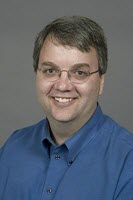Continued from Part 1…
Aoki and Boku’s appeals to the Supreme Court were rejected in 2006, but their supporters continued the fight to get a retrial for them.
Boku filed a petition for retrial to the Osaka District Court on July 7, 2009. Aoki also filed her petition one month later.
The Criminal Procedure Code of Japan states that one of the instances where a retrial should be granted is “When clear evidence has been newly discovered that in regard to a person pronounced guilty a judgment of ‘not guilty’ or acquittal should be pronounced…” (emphasis added. The Code of Criminal Procedure 435 (6), translated by the Ministry of Justice).
The Supreme Court has ruled that this “clear evidence” means evidence which has the probability to give rise to a “reasonable doubt” and alter the findings of the final judgment. The court reviewing the petition for retrial shall judge whether the clear evidence, combined with all the other evidence presented in the original trial, would give rise to a reasonable doubt. If a reasonable doubt to the original decision is developed, a retrial shall be granted (Supreme Court Decision on May 20, 1975).
The defense presented several new pieces of evidence. The Osaka District Court conducted 10 meetings with the defense and the prosecution from December 2009 through May 2011. In these meetings, the prosecution agreed to disclose evidence that were never disclosed before, and they agreed to conduct a new experiment.
Back in 2006, the defense presented the result of their own experiment to the Supreme Court before the appeal was rejected (watch the experiment which was aired on a national TV show in 2006 here (go to the bottom of the page and click to start the video). However, the experiment during the retrial petition hearings focused on whether Boku was able to start the fire in the way he stated in his confession.
The new experiment was conducted on May 20, 2011, with a clerk from the prosecutor’s office present. The temperature on the day of the experiment was about the same as the day of the incident. They built the garage with the same kind of vehicle that was in Aoki and Boku’s garage. They reproduced everything including the gas water heater for the bathtub that was located in the garage, the bathroom and bath tub in the next room to the garage, the tilt of the floor of the garage.
Boku stated in his confession at the investigation stage that he “spread 7.3 liters of gasoline on the floor of the garage, and lit a fire with a turbo-lighter”. Was this possible?
Apparently not, according to the new experiment.
It would have taken Boku 36 seconds to spread 7.3 liters of gasoline on the floor of the garage according to his confession. In the new experiment, when gasoline was spread on the floor, the instantly-vaporized gasoline from the floor caused the pilot burner of the gas water heater to blast into flames only after 20.8 seconds, and the whole garage was on fire within 1.6 seconds. It was clear from the new experiment that it was impossible to commit the crime in the way Boku described in his confession. This was a clear evidence that Boku’s confession, which was the main evidence of Aoki and Boku’s guilt in the original trials, was false and totally unreliable. The confessions were, as Aoki and Boku have always contended, false confessions forced out of them during long interrogations by the police.
On March 7, 2012, the Osaka District Court ruled to grant retrial. Presiding Judge Kazuo Mizushima stated in the decision that the petitioners’ confessions were unreliable and unreasonable from a “scientific viewpoint”, taking into consideration the result of the new experiment.
However, to the dismay of the supporters, the prosecutors instantly appealed the ruling, and the retrial petition is currently being reviewed by the Osaka High Court.
It has been 17 years since the day of the incident. Aoki is currently at Wakayama Prison and Boku at Oita Prison, still serving their life sentences.
Click here to go to Aoki and Boku’s Supporters’ website.



















Pingback: A Dubious Arson Case – Higashi-Sumiyoshi Case (Part 1 of 2) | Wrongful Convictions Blog
Pingback: Supreme Court Denies Release in Higashi-Sumiyoshi Case | Wrongful Convictions Blog